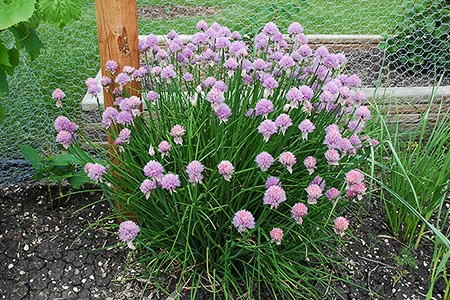How To Grow And Care For A Globe Thistle Plant
So, I stumbled across this amazing image on this thing called "The Internet", and I just had to share it with all of you garden lovers out there! This is some serious landscaping inspiration right here.

Now, let's get down to business. This garden is absolutely stunning, but let's talk about the plant attributes that make it so gorgeous!
Plant Attributes
From the image, I can see that this garden boasts a beautiful mix of annuals and perennials, with a wide array of colors and textures. Some of the standout features include:
- Tall, spiky plants like delphiniums and foxgloves
- Bright, cheerful blooms like daisies and zinnias
- Low-growing, lush ground cover like creeping phlox and sedum
- Dramatic foliage like hostas and ornamental grasses
Of course, the specific plants used in this garden will vary depending on your location and climate, but overall these are great plant attributes to keep in mind when creating your own stunning garden.
Now that we've talked about the plant attributes, let's talk about garden care! After all, a beautiful garden requires a bit of maintenance to keep it looking its best.
Plant Care
First and foremost, it's essential to select plants that are well-suited to your specific climate and soil type. This will ensure that they thrive and require less maintenance overall. Once you've selected your plants, be sure to:
- Water them regularly, but don't over-water, as this can lead to root rot
- Provide adequate sun or shade depending on your plants' individual needs
- Fertilize as needed throughout the growing season
- Control weeds and pest issues as they arise, using environmentally friendly practices whenever possible
If you follow these plant care tips, you'll be well on your way to a thriving, beautiful garden!
Next up: pruning!
Pruning
Regular pruning is an essential part of maintaining a beautiful garden. Not only does it keep plants looking neat and tidy, but it also promotes healthy growth and blooming. Some general pruning guidelines include:
- Deadheading spent blooms to encourage continued blooming
- Removing any dead or diseased branches from trees and shrubs
- Pruning back overgrown or unruly plants to promote bushier growth
Remember, each plant has its own unique pruning needs, so be sure to research and understand the specific care requirements of each plant in your garden.
On to propagation!
Propagation
Propagation, or the process of creating new plants from existing ones, can be a great way to expand your garden and achieve a cohesive look. There are a few different methods of propagation, including:
- Dividing clumping perennials
- Taking cuttings and rooting them in soil or water
- Collecting seeds from annuals and perennials and starting them indoors or directly in the garden
Propagation can be a bit intimidating at first, but with a bit of practice, it can be a fun and rewarding way to expand your garden and get creative with your plant selection.
Next up: potting and repotting!
Potting & Repotting
If you're growing plants in containers, proper potting and repotting is key to their success. Here are some general guidelines to follow:
- Choose a container with adequate drainage and size for your plant
- Use a high-quality potting mix that's appropriate for the type of plant you're growing
- Repot as needed to prevent the plant from becoming rootbound or to give it more room to grow
By following these tips, you'll be well on your way to container gardening success!
Let's talk about some common pests & plant diseases you may encounter while gardening.
Common Pests & Plant Diseases
Unfortunately, no matter how well-maintained your garden is, you're likely to encounter a few pests and diseases along the way. Here are some common issues to look out for:
- Aphids, spider mites, and other small pests that can suck the life out of your plants
- Fungal diseases like powdery mildew and black spot, which can cause leaves to yellow and drop prematurely
- Viral diseases like mosaic virus, which can lead to stunted growth and abnormal leaf coloration
The best way to prevent these issues is to practice good garden hygiene, avoid overcrowding plants, and remove any diseased or infested plants immediately. If you do encounter a problem, there are a variety of organic and chemical control methods available, depending on your preferences and the severity of the issue.
Last but not least: common problems!
Common Problems
Finally, let's talk about some common garden problems you may encounter, as well as how to solve them:
- Weeds: Control weeds by pulling them manually, using a hoe or cultivator, or by applying a mulch barrier
- Drought: Help your plants survive drought by watering deeply and infrequently, mulching to retain moisture, and selecting drought-tolerant plants
- Overcrowding: Give your plants plenty of room to grow by following recommended spacing guidelines and pruning as needed
- Animal damage: Protect your plants from animals like deer, rabbits, and squirrels by using barriers, repellents, and other control methods as needed
By staying vigilant and addressing problems as soon as they arise, you'll be able to maintain a beautiful, thriving garden that's the envy of all your neighbors!
Well, that just about wraps up our little gardening lesson for today! I hope you found this information helpful and that it inspires you to create your own stunning garden. Happy gardening!




Post a Comment for "How To Grow And Care For A Globe Thistle Plant"